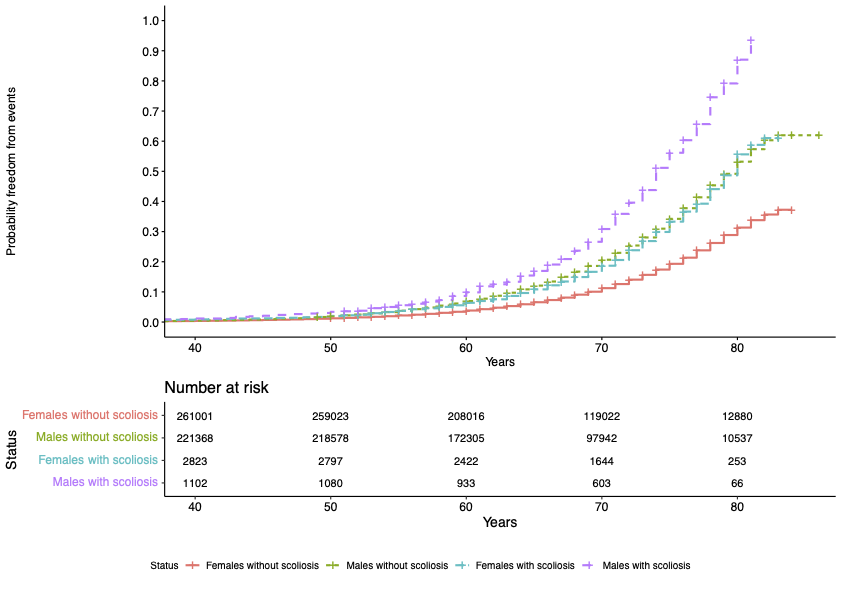We are pleased to share a new article by Valentina Santofimio on research she completed during her masters programme with us.

The abnormal curvature of the spine in scoliosis patients can impact organs within the ribcage including the heart. Most cardiac studies of scoliosis patients to date surround investigations into congenital heart disease. The relationship between scoliosis and non-congenital cardiac manifestations in adults is not well characterised.
Our study focused on investigating the impact of scoliosis on the heart through assessment of cardiac MRI (CMR) traits in the UK Biobank (UKB) adult population cohort. A total of 4,095 (0.8%, 1 in 120) UKB participants were identified to have all-cause scoliosis.
Significant associations were found between scoliosis and older age, female sex, heart failure, valve disease, hypercholesterolemia, diagnosis of hypertension, and decreased enrolment for CMR. We identified altered radial and longitudinal peak diastolic strain rates (PDSR) in participants with scoliosis with CMR available compared to participants without diagnosis of scoliosis. 3D cardiac modelling also showed altered cardiac strain.

A significantly increased lifetime risk of MACE was observed for UKB participants with scoliosis (HR=1.45, P<0.001), mainly driven by heart failure (HR=1.58, P<0.001) and atrial fibrillation (HR=1.54, P<0.001). The probability of MACE doubled in males into older age (from 60 years of age). This may be caused through the altered cardiac diastolic strain rates observed in participants with scoliosis.

The abnormal curvature of the spine can increase mechanical constraint on the heart which may result in diastolic dysfunction and the severity of the spinal deformity has been shown to aggravate ventricular and right atrial pressure.
Scoliosis may be an important modifier of cardiac strain in the adult population. This has clinical implications for the consideration of undertaking scoliosis treatment surgery. However, further research is required to follow up the role of scoliosis in cardiac manifestations in a clinical setting, alongside genetic analyses to assess causality.